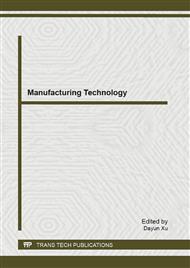p.158
p.163
p.167
p.171
p.177
p.181
p.185
p.189
p.193
The Study of Matching Technology between Magnetometer and Vehicle
Abstract:
With measuring instrument accuracy enhancement, it is to meet the requirements of the geomagnetic matching location, but the underwater vehicle is mainly made of ferromagnetic material, the sensor measured except magnetic field, besides magnetic field that the vehicle of the inherent hard magnetic and soft magnetic materials produce and vehicle magnetic fields produced in mechanical and electrical equipment. At the same time, the precision of the geomagnetic measurements will be affected by sensor manufacturing error and installation error factors. Therefore, how to extract the magnetic field from complex environment is a real time measurement of a difficult problem. This paper is based on the magnetic dipole magnetic field distribution theory to establish the vehicle of the magnetic field distribution mathematical model, and through the carrier of space and azimuth magnetic measurement get vehicle plane space magnetic figure. Through the related coefficient to deduce the best position of the magnetometer attaching on the vehicle to make magnetometer the smallest influence while sailing in.
Info:
Periodical:
Pages:
177-180
Citation:
Online since:
December 2012
Authors:
Price:
Сopyright:
© 2013 Trans Tech Publications Ltd. All Rights Reserved
Share:
Citation:


